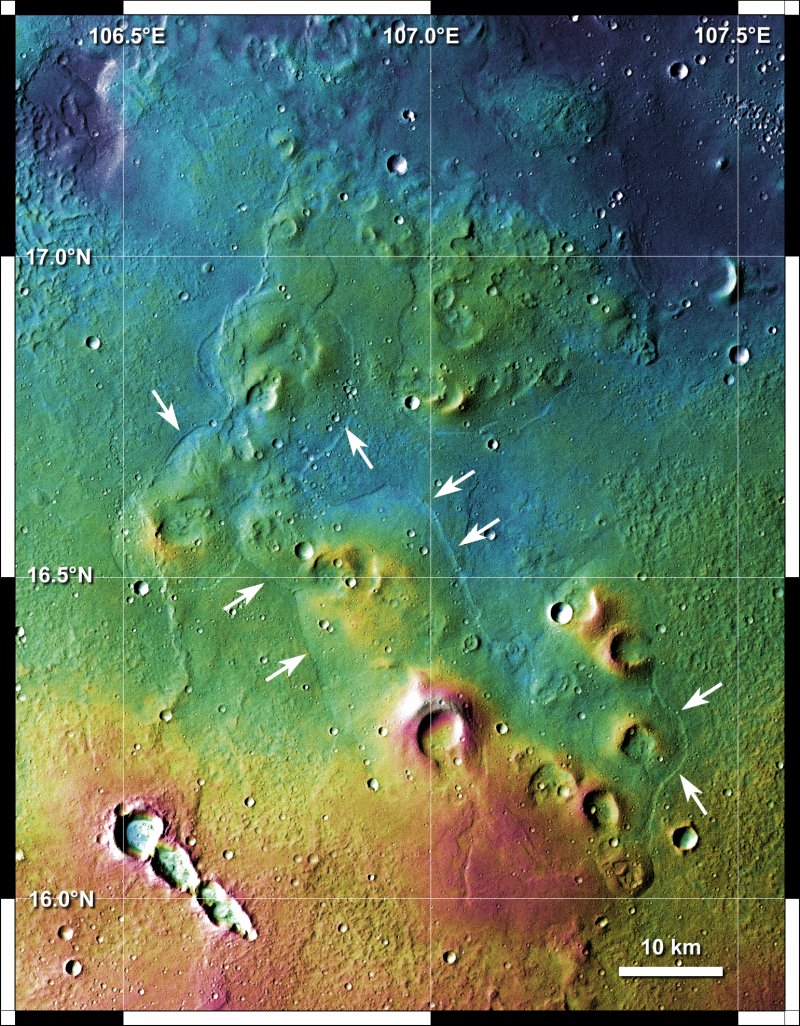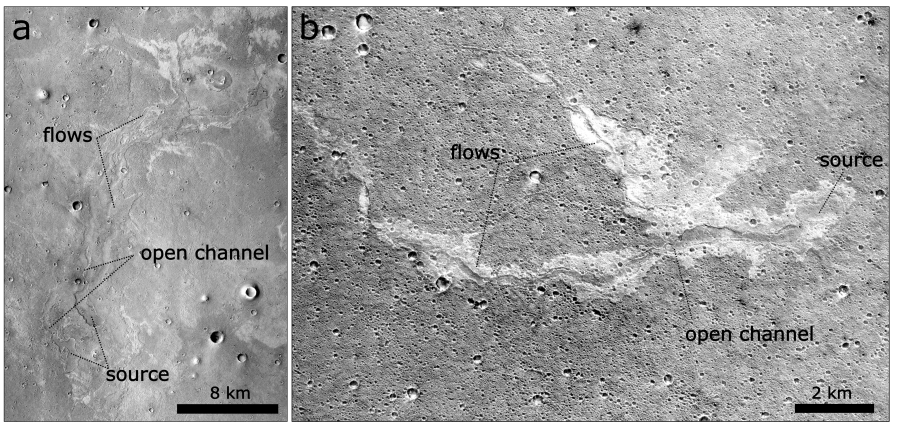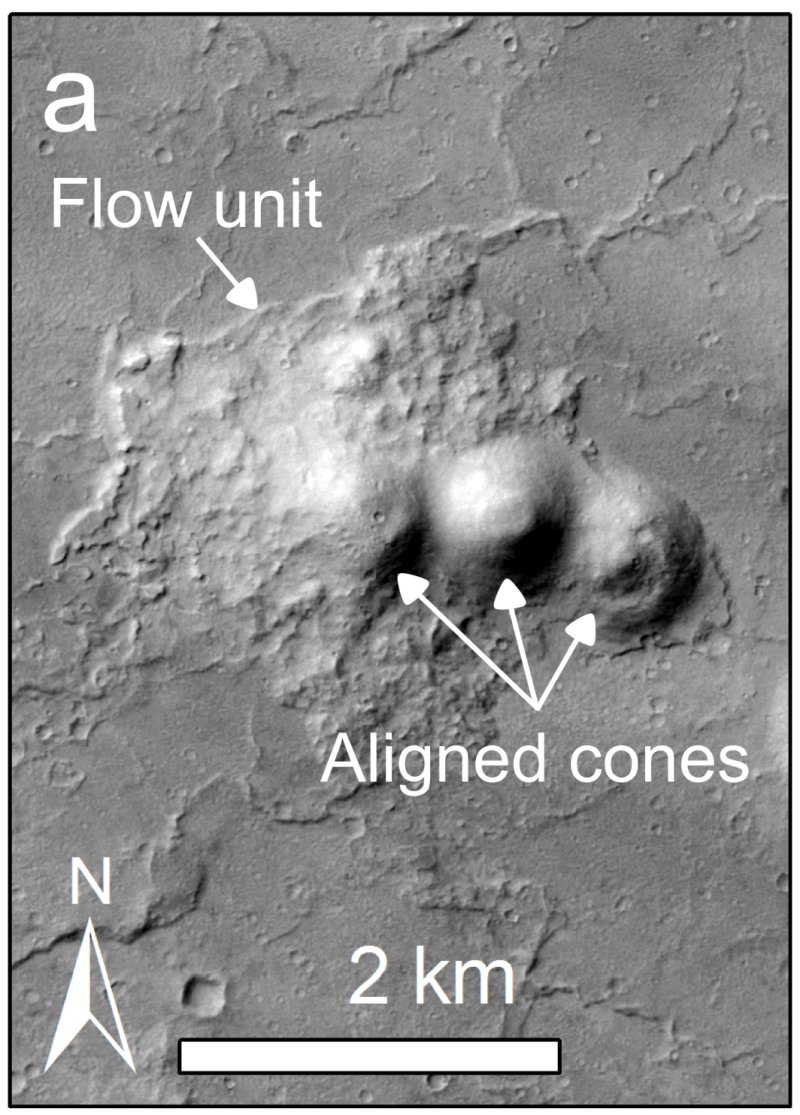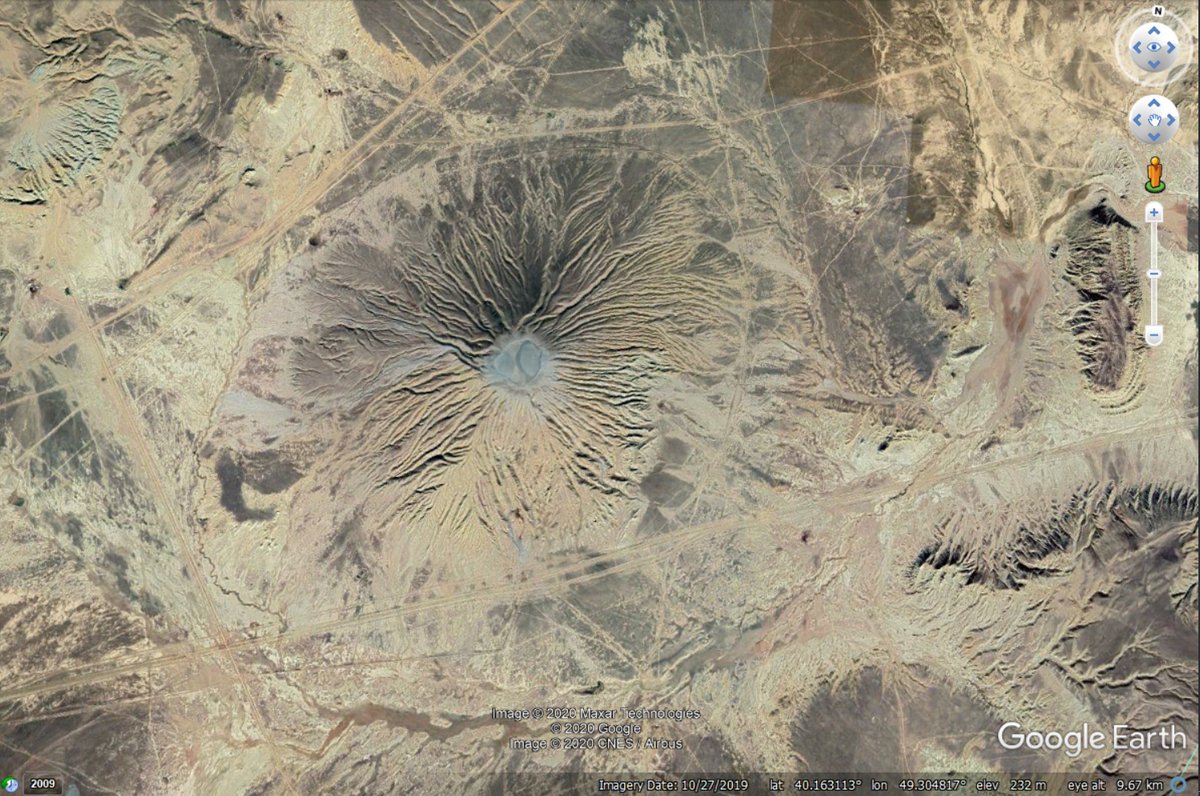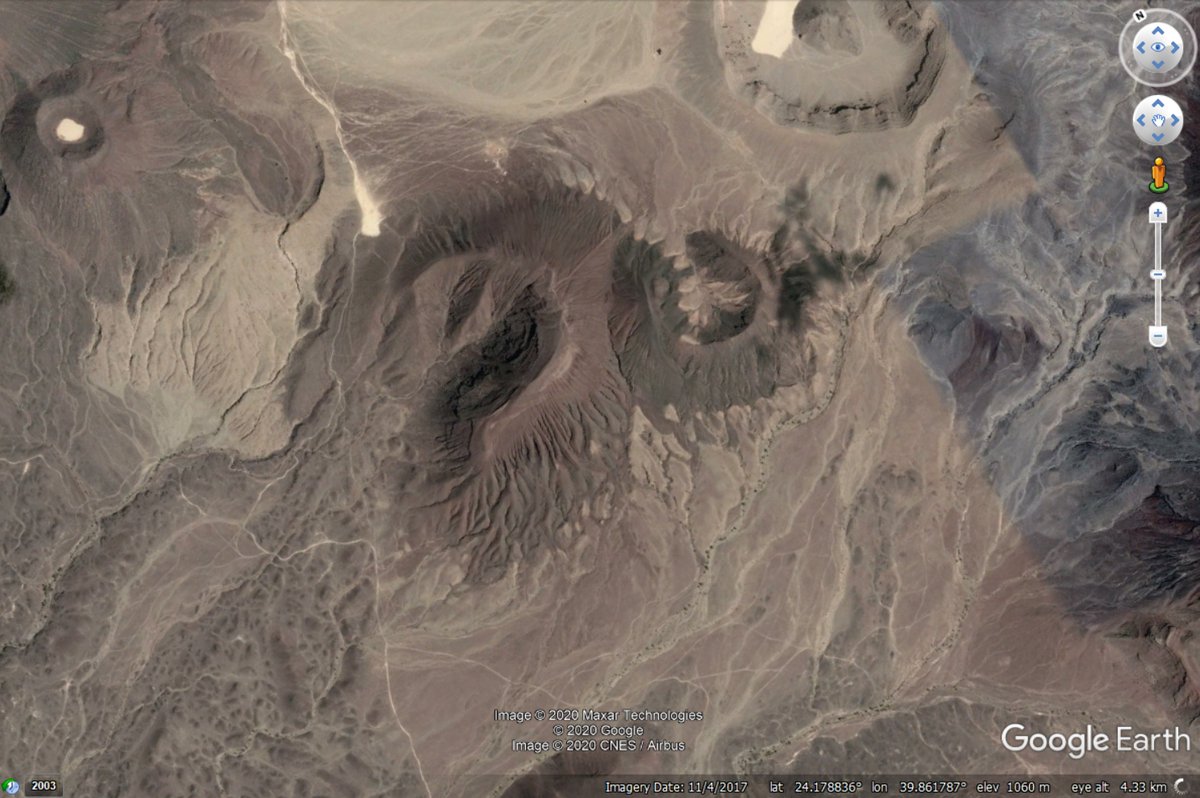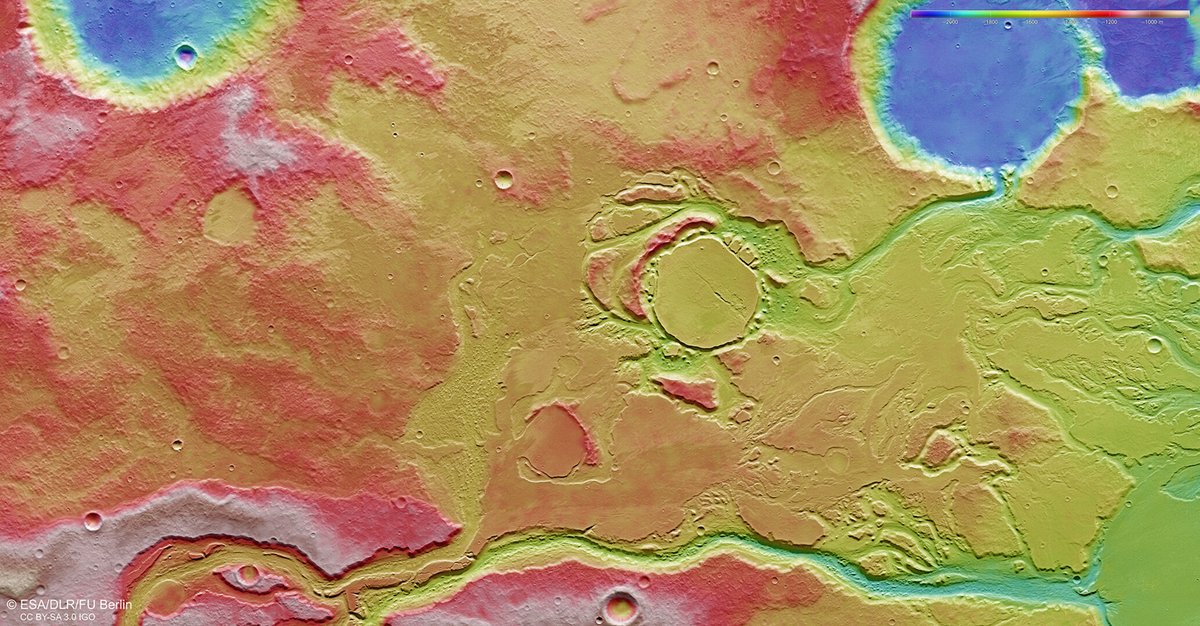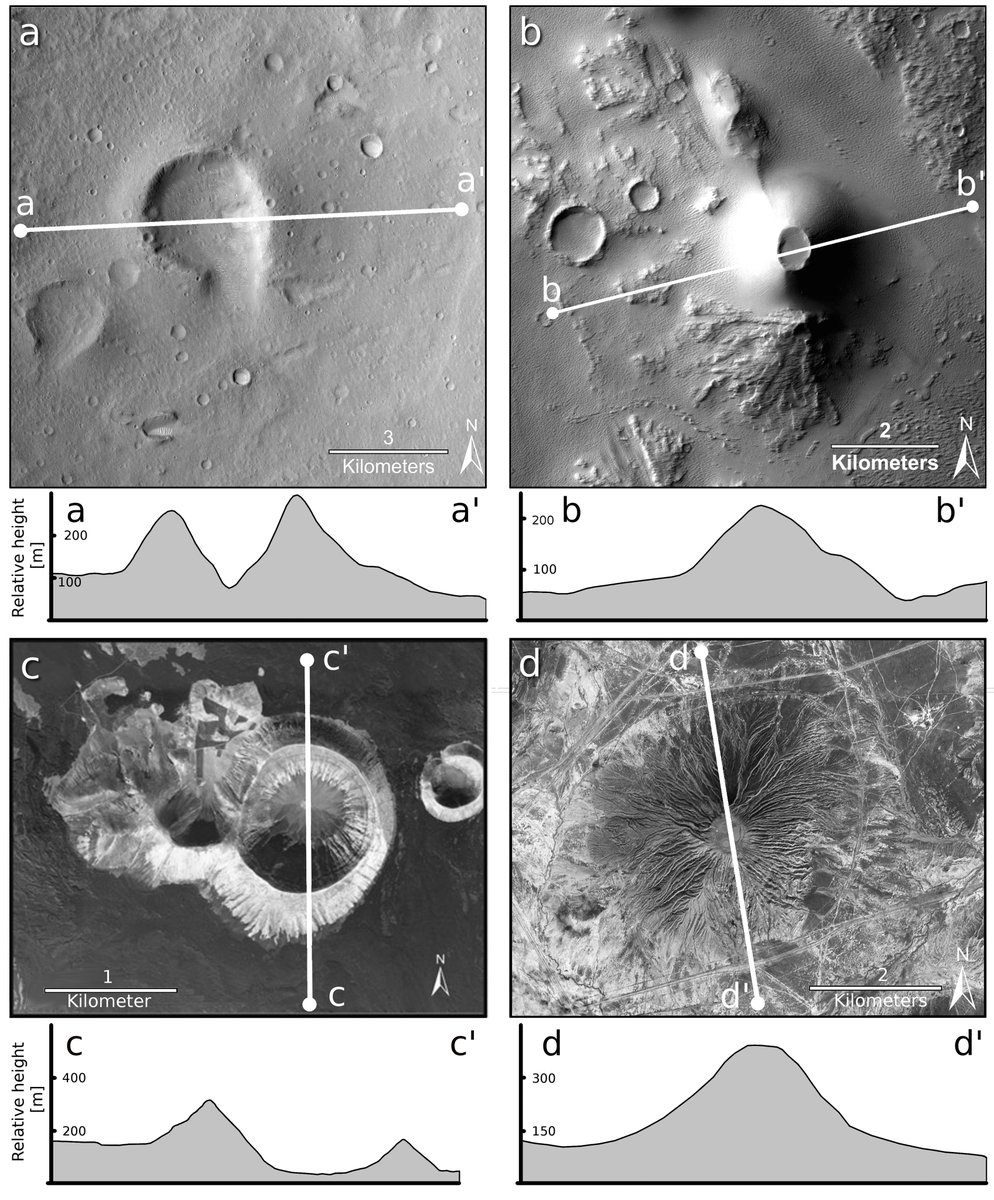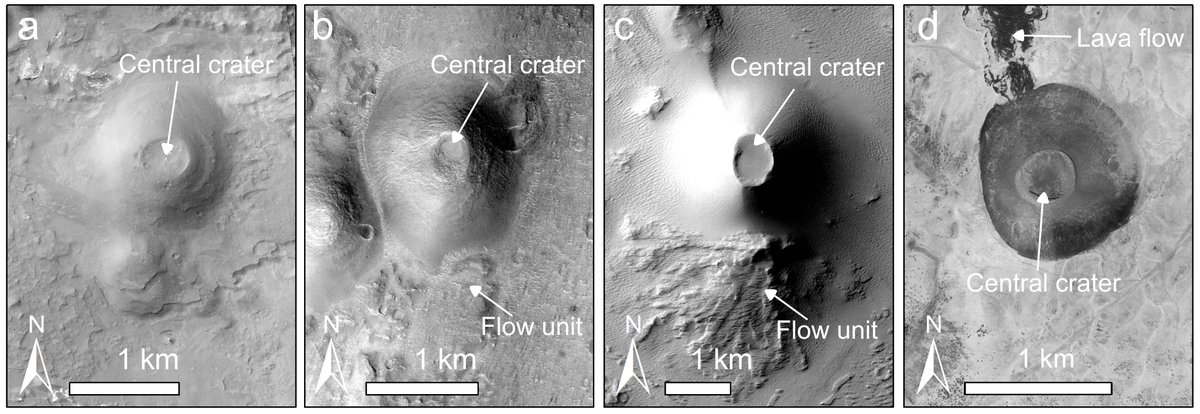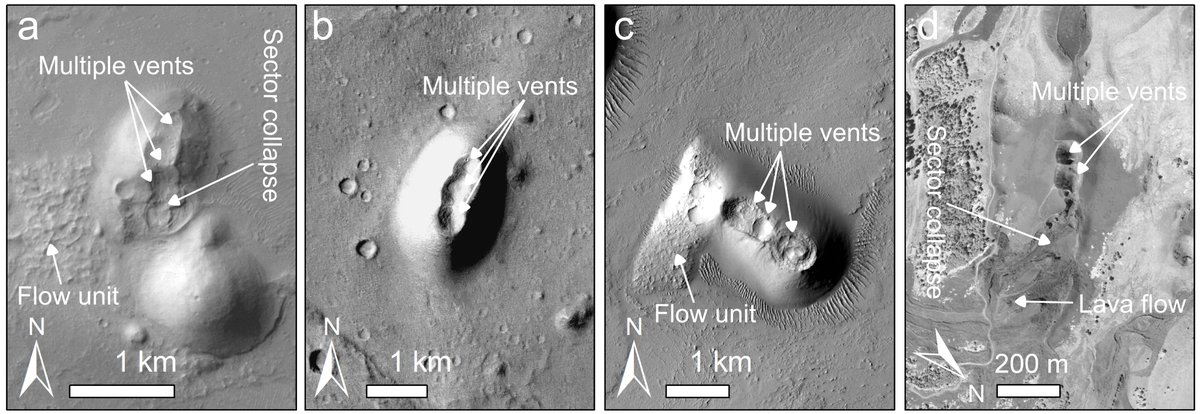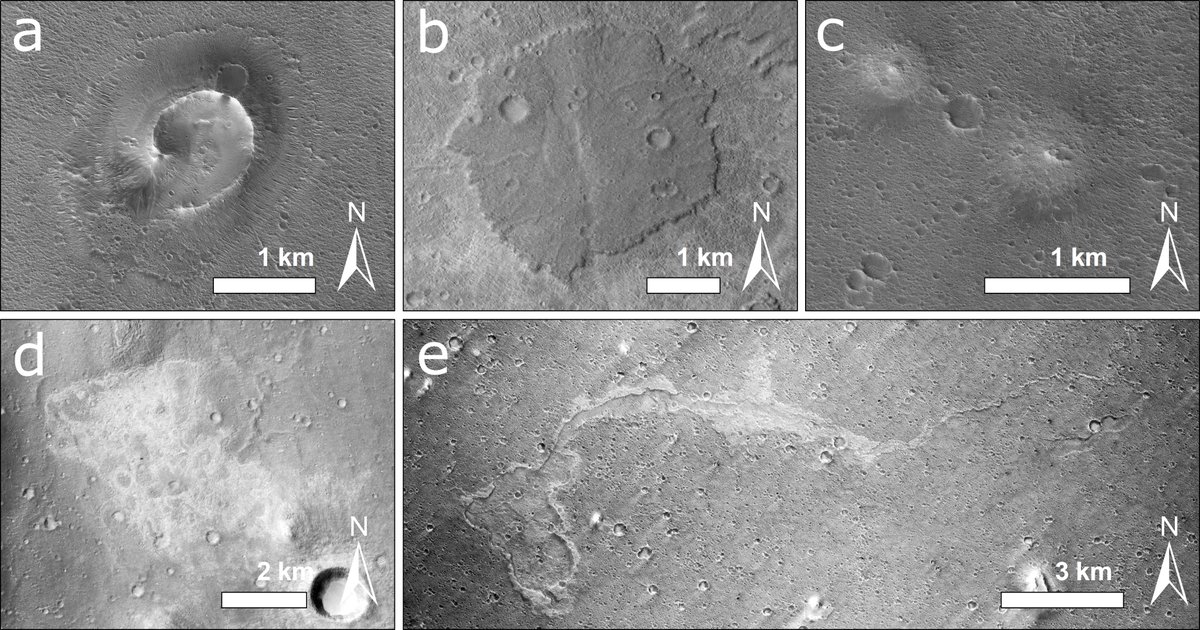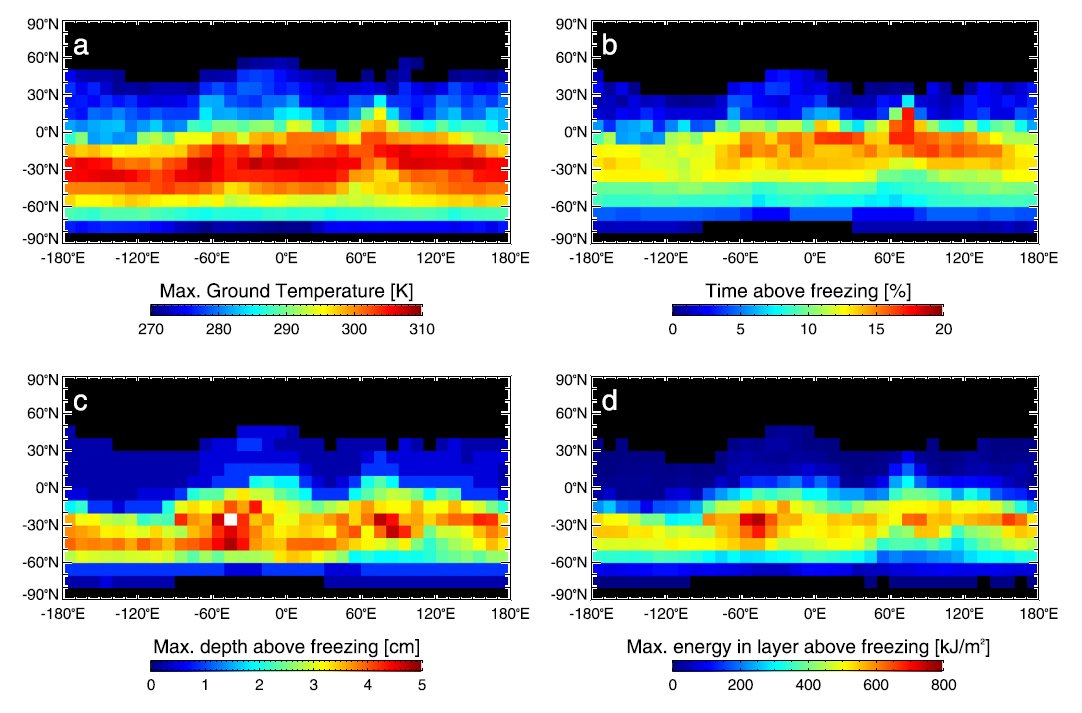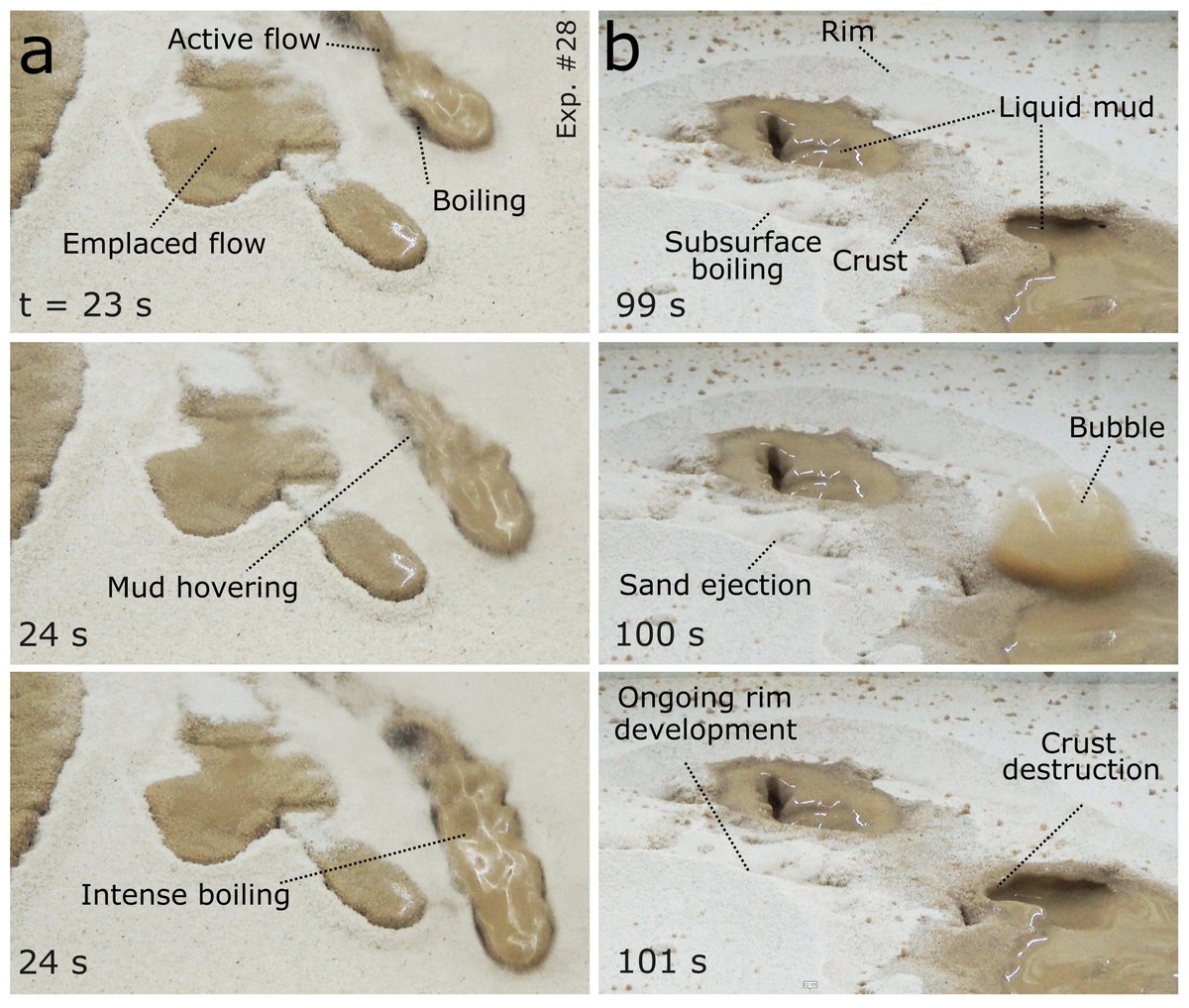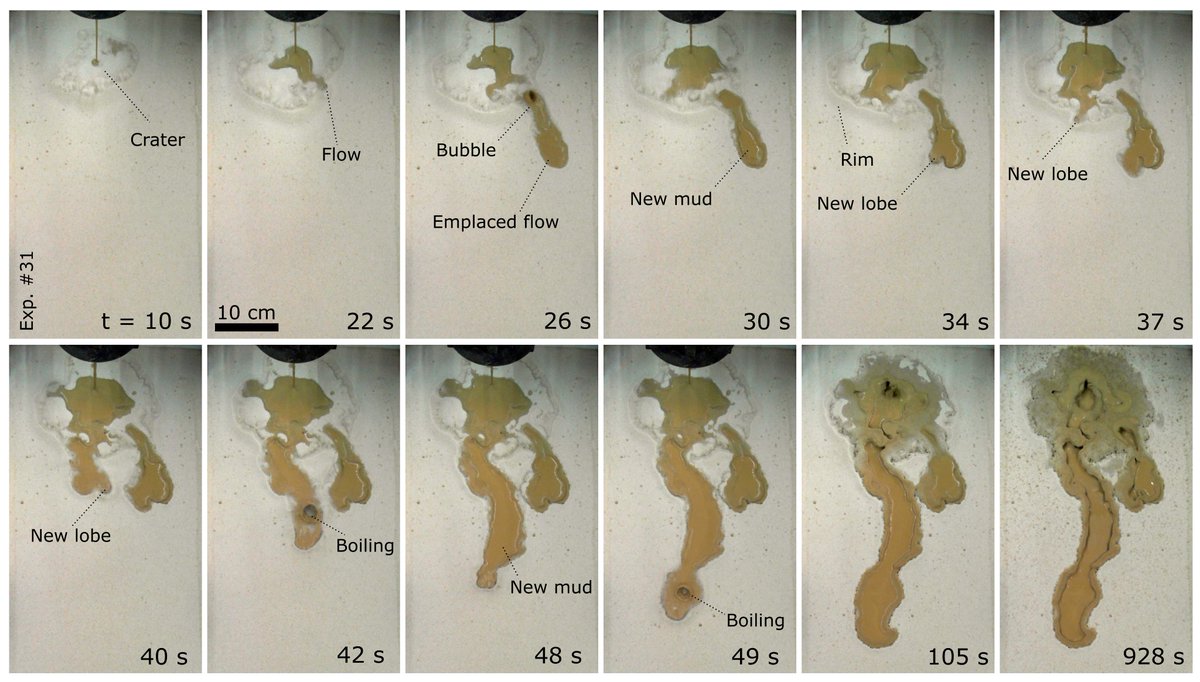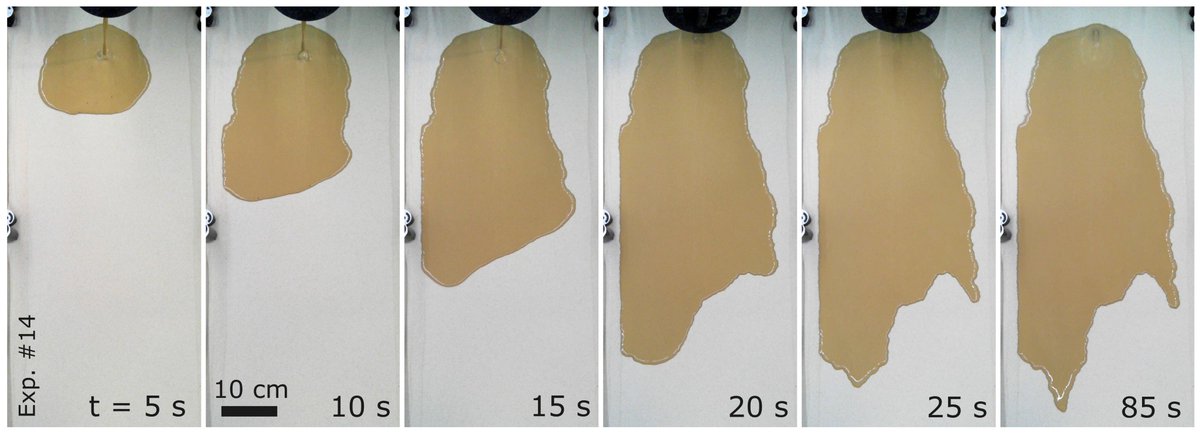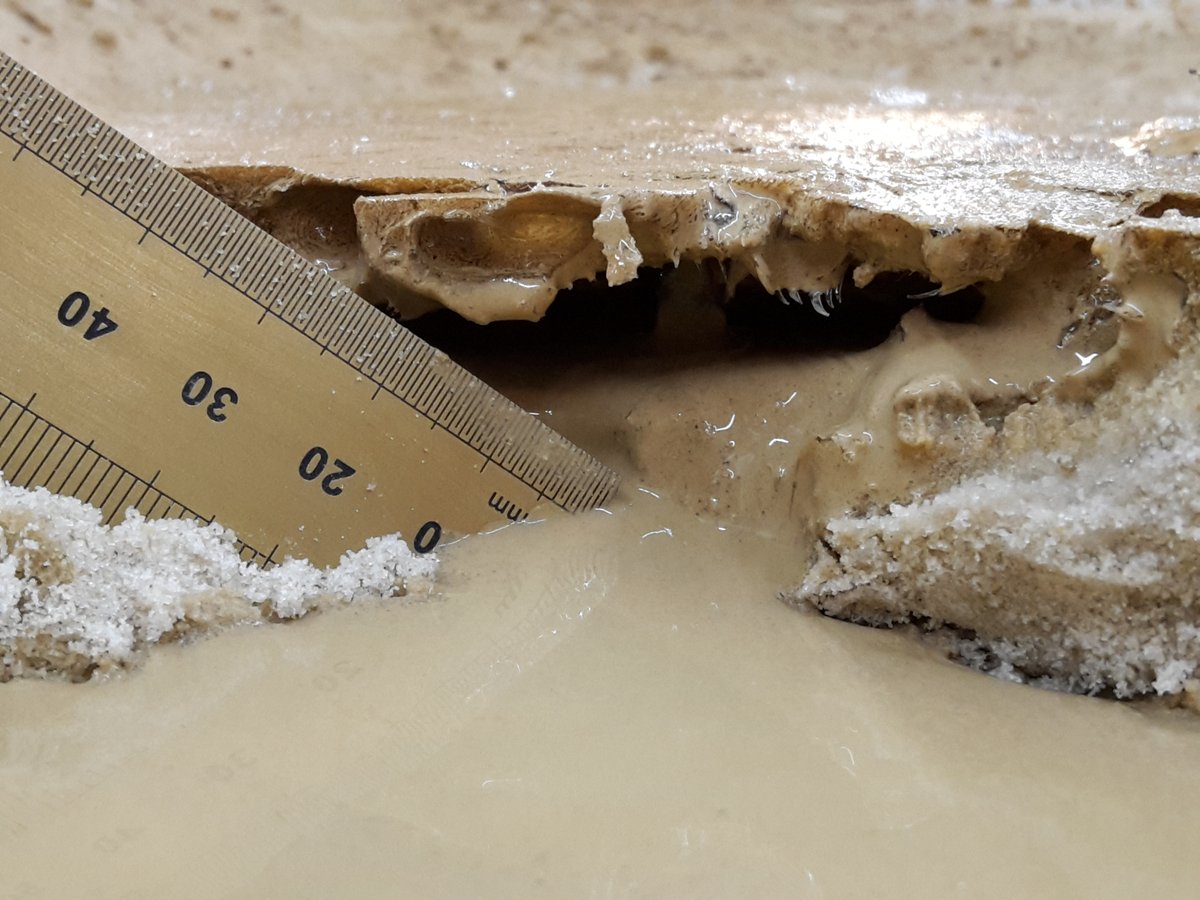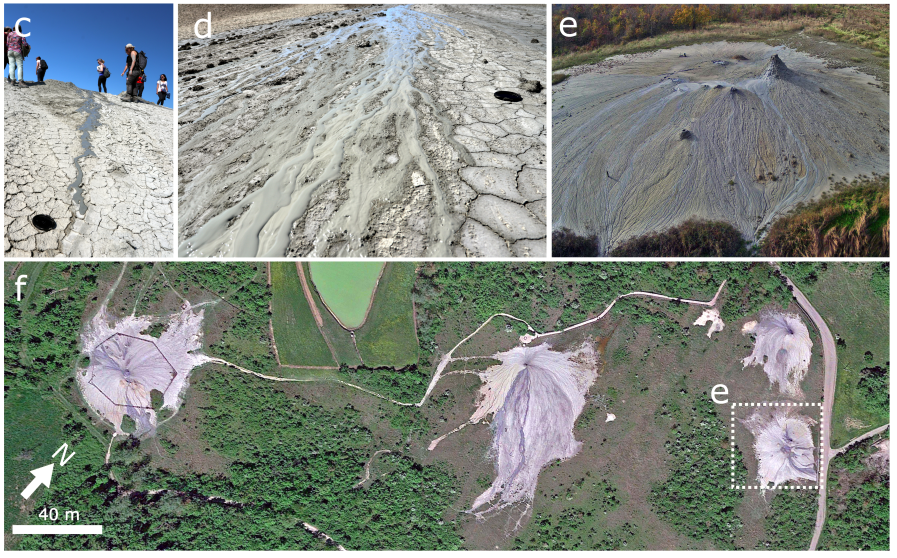Everything you want to know about the sedimentary volcanism (aka mud volcanism) on #Mars but were afraid to ask... disclaimer: this will be a very long thread after which you will never see the mud in the same light as before... 1/n
So let's start. There is a ongoing debate within martian community whether some flow-like and cone-like features on the surface of Mars resulted from igneous #volcanism or sedimentary volcanism. We are trying to find this out really hard, but this is not easy task. Why? 2/n
The problem is that we know from #Earth that igneous volcanism can form features which look quite similar to sedimentary volcanoes. See for example these two images from Google Earth. Do you want to guess which one is a real volcano? If you want to be sure, what will you do? 3/n
Yes, you are right. You will send a #geologist with.... a #hammer! He or she will take samples and in few seconds you know which type of rocks form these cones and flows. The case closed. Quite simple on Earth. But what will you do when your rocks are ca 135 milion km away... 4/n
Well, you can send space probes to planet's orbit or land with them on the surface. But the problem is, non of our probes landed close to these putative muddy/igneous features to study them and no humans on Mars in foreseen future, right @elonmusk? 5/n
But to know how these features formed is important. If they are volcanic, this means that Mars had an active volcanism on much larger scale than we thought. Contrary, if these features are sedimentary, this means that liquid water had to be "recently" released from subsurface 6/n
So it is big deal for our understanding of the evolution of some particular areas of Mars to know THE answer :) For years, as seen from my papers I was the guy which was rejecting the presence of sedimentary volcanoes in various sites on Mars. 7/n https://agupubs.onlinelibrary.wiley.com/doi/full/10.1002/jgre.20120
Me and my co-authors argued that many martian features are not sedimentary volcanoes because they have morphological, morphometrical, spectroscopic or spatial similarities with terrestrial igneous volcanoes. 8/n https://www.sciencedirect.com/science/article/abs/pii/S0012821X17303126
For several fields, this approach works... But once I read paper by Komatsu et al. (2016) about large field of cone-, flow- and pancake-like features inside Chryse Planitia and I was like: Hm, sedimentary volcanoes here, again? Let's try disprove it 9/n https://www.sciencedirect.com/science/article/abs/pii/S0019103515005989
But this time I did not succeeded. I had to admit that the idea of sedimentary volcanism within this area is making sense. But I didn't want to give up so easily. To accept it I needed to know whether mud can flow on Mars or not 10/n https://agupubs.onlinelibrary.wiley.com/doi/abs/10.1029/2018JE005868
Why this was important? Because I knew that water is not stable on Mars. There is so low pressure (~7 mbar) that water can not be liquid for prolonged period of time. If it can not be liquid, how would be possible that mud will be? This bothered me
Daniel Hobley CC BY-SA 3.0 11/n
Daniel Hobley CC BY-SA 3.0 11/n
When I read a paper by Raack et al. (2017) describing the novel transport mechanism of sediments by levitation caused by the instability of liquid water in martian environments I started to wonder again how this would affect the way mud moves on Mars. 12/n https://www.nature.com/articles/s41467-017-01213-z
To satisfy my curiosity I wrote an email to Dr. Raack and asked him a simple question; do you know how mud would behave on the surface of Mars? He did not know and neither did anyone else whom I asked. But he made the best out of the situation. 13/n
He suggested using the @europlanetmedia society funding scheme to get access to a low pressure chamber situated at the @OU_SPS (United Kingdom) and to find out for myself. A few months later I was with my college in the lab of Dr. Manish Patel, playing with mud. 14/n
Dr. Patel did not care too much how dirty his chamber would get, as long as the experiments had an interesting scientific question to answer. A rare situation… I felt almost like a child again as me, as well as the low pressure chamber, were covered in mud all day long. 15/n
For four weeks we worked long days spending more than 10 hours per day in the lab. A lot of effort, but it was worth it. Even though the first couple days were full of failures, we realized very soon that we were on the verge of an interesting discovery. 16/n
Even the failures were showing that the mud was behaving in very strange way compared to our everyday experience (see below). It did not flow in the same way as, for example, when we accidentally spilt it over the lab bench or floor – not that this ever happened, of course… 17/n
Soon we mastered the experimental setup and we began to understand what we were observing. The mud was boiling as the atmospheric pressure in the chamber was low and soon after it started to freeze because of evaporative cooling. 18/n
However, the freezing did not occur throughout the entire volume of the mud flow – it only froze at the surface and an icy-muddy crust was formed that protected the liquid mud underneath. We actually produced a biscuit-like mud flow with mud tubes! 19/n
We observed that mud movement over a cold surface under low atmospheric pressure in many ways resembled the movement of very mobile terrestrial #pahoehoe lavas. Cool, right? 20/n
And this has really large consequences. We just realized that if you have a satelite image of the surface of Mars and you will see there flow-like features which look exactly like terrestrial pahoehoe lavas, they can be formed by mud... So you can not be sure what you see 21/n
Couple weeks ago this story was published in @NatureGeosci so those interested in details, have a look in the article 22/n https://www.nature.com/articles/s41561-020-0577-2.epdf?sharing_token=qZWlEW6oqhc_IUSEVTVOIdRgN0jAjWel9jnR3ZoTv0MSybv2f0kzKRufqgBCPhV6apr2VnLfHMdZxvq6FXX7TgNolE8Fpe9BOJEwWVe_RZeQBOXuwy7a-xbG9f0BqGBW0EY7AJ4g2AldcUyi6yYPMu2PHOPVmWezaxek-h6AMto%3D
But this was not the end of the story. During our experiments we were aware that the surface of Mars does not have to be just really cold. Actually they are areas during different seasons with quite high temperatures = up to 20°C. 23/n
So we were curious what will happen in such scenario. Therefore we decided to repeat experiments and this time poured the mud over the sandy surface with the room temperature... And what happened shaken my world again. We observed that mud levitated inside the chamber! 24/n
Yes, it is correct. The mud really levitates over the surface. This is... and yeah, you already know the answer... because water is still unstable. It is changing into the water vapor giving rise to large amount of bubbles. Bubbles are expanding and hovering the mud 25/n
This crazy transport mechanism which you will never see to operate on Earth is significantly effecting resulting morphologies of mud flows. This means that if we will have active mud volcanism on Mars, we should not expect that resulting features would look same as on Earth 26/n
And this is important. Our experiments clearly show that we can not really compare martian putative mud volcanoes to their terrestrial analogues. And we should have this in mind when studying features on other celestial bodies. 27/n
And again, if you will be interested in details, have a look in our new paper which was just published yesterday in EPSL. 28/n https://www.sciencedirect.com/science/article/pii/S0012821X20303502?via%3Dihub
Now you should be shouting. Hey, wait the minute. You are modeling flows which are few cm wide and dozens of cm long... These processes can not be as important for larger flows. And this is right. We were also concerned about this. So we made THE ULTIMATE experiment... 29/n
The one which we were not allowed to triplicate by the technician supervising the usage of the vacuum chamber. So good advice here, let's not try this at home! We made a crater which we infilled by 1.6 l of low viscosity mud. So we had a ca 5 cm thick muddy puddle. 30/n
By this experiment we really messed up the chamber... and what more, we really tested the pumps... But the chamber survived :) And what we discovered was that the freezing occurred again. This means that even large quantity of mud will sooner or later freeze on its surface 31/n
Now think about the real scenario. Many of us believe that there is (or was) a liquid water underneath the martian surface and that such water was extruded (not important why...). Because water has a low viscosity, it will be spreading by small/thin flows
And these small flows are exactly within the range of our experiments! So the scaling seemed to be an issue but it is not. We modeled the mud flows within the range of sizes which are actually quite common on Earth. 33/n
So going to the finish. Is this the end and do we know now everything about mud on Mars? Definitely not. We just performed the first generation of really simple experiments and with just one type of mud. As always, much more work has to be done. 34/n
This is the reason why I applied for extra funding and surprisingly I got it. So next year I will spend another six months at the Open University in UK by plying with mud. So get ready that in upcoming years there will be couple other papers about behavior of mud on Mars :) 35/35

 Read on Twitter
Read on Twitter